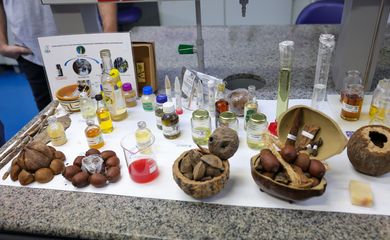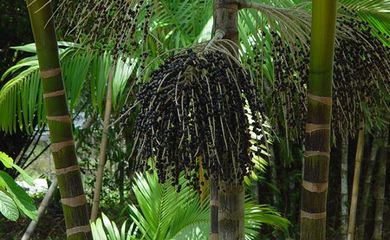Amazon bromeliad could be alternative to petroleum plastics

Research into a species of bromeliad native to the Amazon and similar to the pineapple—the Ananas erectifolius, also known as the curauá—has shown high potential as a sustainable alternative for petrochemical plastics. The study, conducted at the Amazon Bio-Business Center (CBA) in Manaus, is being carried out with family farmers.

In cooperation with other institutions, CBA supplies the seedlings, trains producers in planting and fiber production, and join efforts with a company to produce the bioplastic.
“Our idea is to develop production chains and bring development, income, and a social and environmental appeal to the interior of our state. Patents have been registered for ballistic vests, beams for buildings, and anti-earthquake materials—all owing to the great elasticity and resistance of this fiber,” said CBA Plant Technology Manager Simone da Silva.
Present in non-forest regions, the curauá is closely adapted to the region’s climate and soil characteristics, favoring non-soaked, acidic, and not very fertile soil. It is regarded as an excellent option for sustainable management, as it grows best in shaded areas and alongside other species.
Besides the fact that preparing the area does not require fire or felling, planting can be done at any time of the year. “It’s very much in line with our idea of implementing agroforestry systems. Producers don’t have to stop planting what’s their natural vocation. If they produce açaí, manioc, papaya, or passion fruit, they can produce them as part of a consortium,” she pointed out.
Economic potential
The sustainability of the curauá is also reflected in its economic viability, which is attracting interest from industry as a substitute for petrochemical polyethylene, fiberglass, and even other natural fibers, like mallow and jute, imported from Bangladesh.
“It’s a species native to the Amazon that’s not very widespread and has a lot of commercial interest. The fiber is the natural option with the greatest mechanical resistance known today, according to our research results,” CBA Operations Director Caio Perecin noted.
Processing the Amazon bromeliad is also simple and can be undertaken by adapting sisal-processing equipment. The machine is safe and poses no risk of accidents when handling it, researcher Simone Silva said.
“Our idea is that producers won’t sell the leaf, but at least supply some of the fiber, generating as much added value as possible,” Silva went on to say.
Lab-grown seedlings include the white curauá, a species that has the natural advantage of having more tillering than the purple curauá. After planting, the crop is harvested after 10 to 12 months in the first year. From the second year onwards, harvests can occur three to four times a year.
As the curauá market has not yet been established in the region, researchers are reluctant to speculate on producers’ incomes, but they guarantee that several industrial sectors have expressed a significant interest. “What the interested sectors say is that since they pay a lot for jute and mallow fiber, for example, which comes from Bangladesh, they’re willing to pay the same for curauá fiber, which can generate BRL 9 to 10 per kilo of fiber,” Silva stated.



